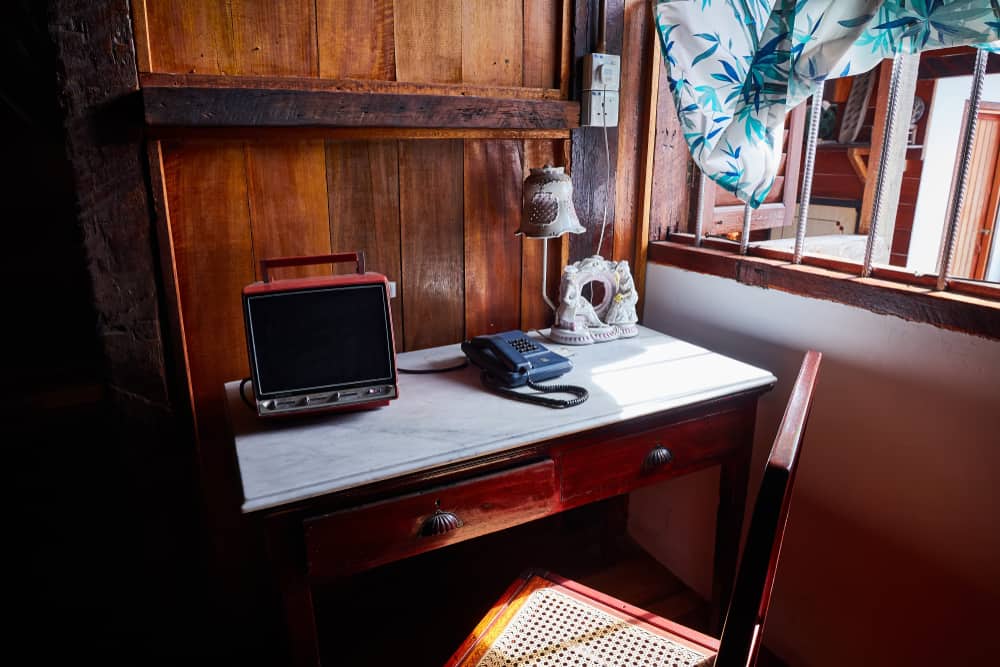Have you ever wondered what it would be like to own an antique desk? Perhaps you have seen one in a museum or antique store and admired its beauty and craftsmanship. In this article, we’re going to look at several antique desk styles, how to know if the desk you own is an antique, and the best places where you can purchase antique and vintage desks.
Let’s get started!
Table of Contents
Antique Desk Styles
Owning an antique desk can be a wonderful experience. Not only are they beautiful pieces of furniture, but they are also very functional.
Many antique desks have multiple drawers for storage, as well as a large surface area for writing. They are also generally very sturdy pieces of furniture, which is ideal if you want a desk that will last for many years.
If you are looking to purchase an old desk, or you are trying to identify one you already own, there are a few different styles in existence.
Here are a few of them:
Cheveret Desk
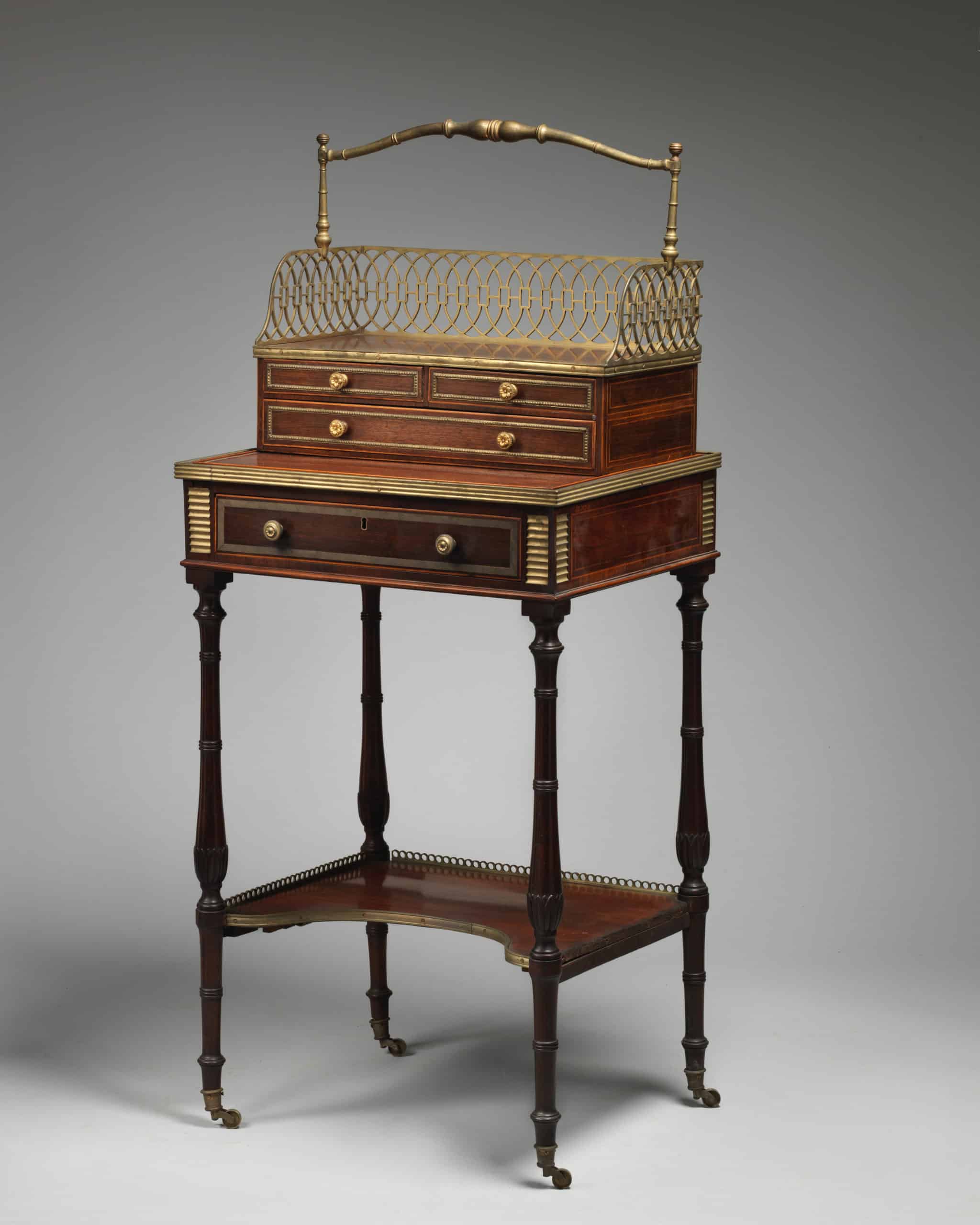
The Cheveret Desk is a small antique desk that was very popular in Europe during the 1700s.
It was designed to be used as a standing desk, and it often contained small drawers, pigeon holes, or a small shelf above the writing space. The desk stood on spindle legs and generally had a shelf or two built between the legs for added storage.
This type of desk is cute and perfect for those who want a small, yet functional, antique desk that they don’t mind using while standing.
Secretary Desk (Escritoire)
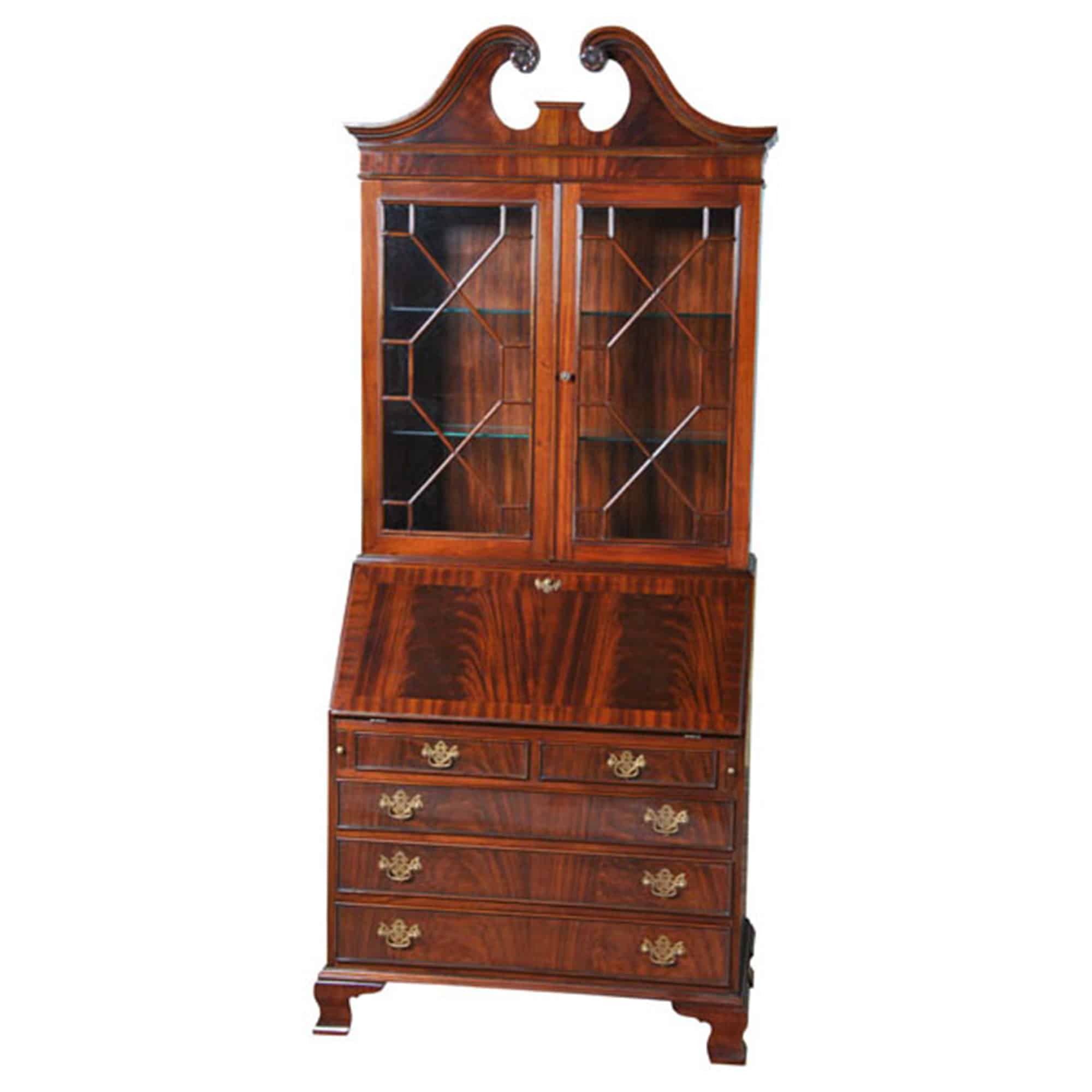
The antique Secretary Desk, or sometimes called an Escritoire, is another small antique desk, which was popular in France during the late 1800s and in the United States in the early 1900s.
It typically has a slanted drop-front surface for writing, as well as several small drawers and slots for storage. In order to use the drop-front surface, usually there are wooden sliders that need to be pulled out of the desk for the surface to rest on. And occasionally, this type of desk will have a bookcase on top of it as well, which gives the owner even more storage.
This type of desk is perfect for those who want lots of storage yet don’t have much space for a huge desk. It’s also convenient to be able to close up the drop-front surface in order to hide mail and paperwork inside.
Butler’s Desk
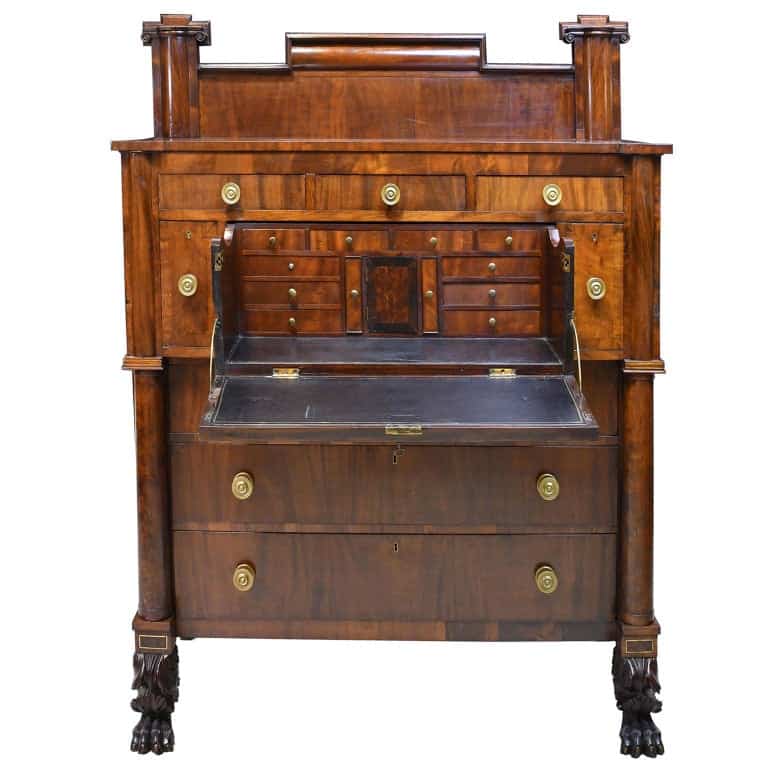
The Butler’s Desk is a large antique desk that was popular in England during the early 1900s.
Typically, when closed up, the Butler’s desk resembles a bureau or a chest of drawers. When opened, the writing space folds down on the desk’s front side and also slides out of the desk to bring the space closer to the writer.
Butler’s desks have a large surface area for writing, as well as several drawers and letter slots for storage. It can be used while standing, as it is a fairly tall piece, but it can also be used while sitting if the chair is high enough.
This type of desk is perfect for those who want a larger piece of furniture, lots of storage space, and a sturdy surface for writing, yet the ability to close up the paperwork so it’s out of sight.
Bureau Mazarin
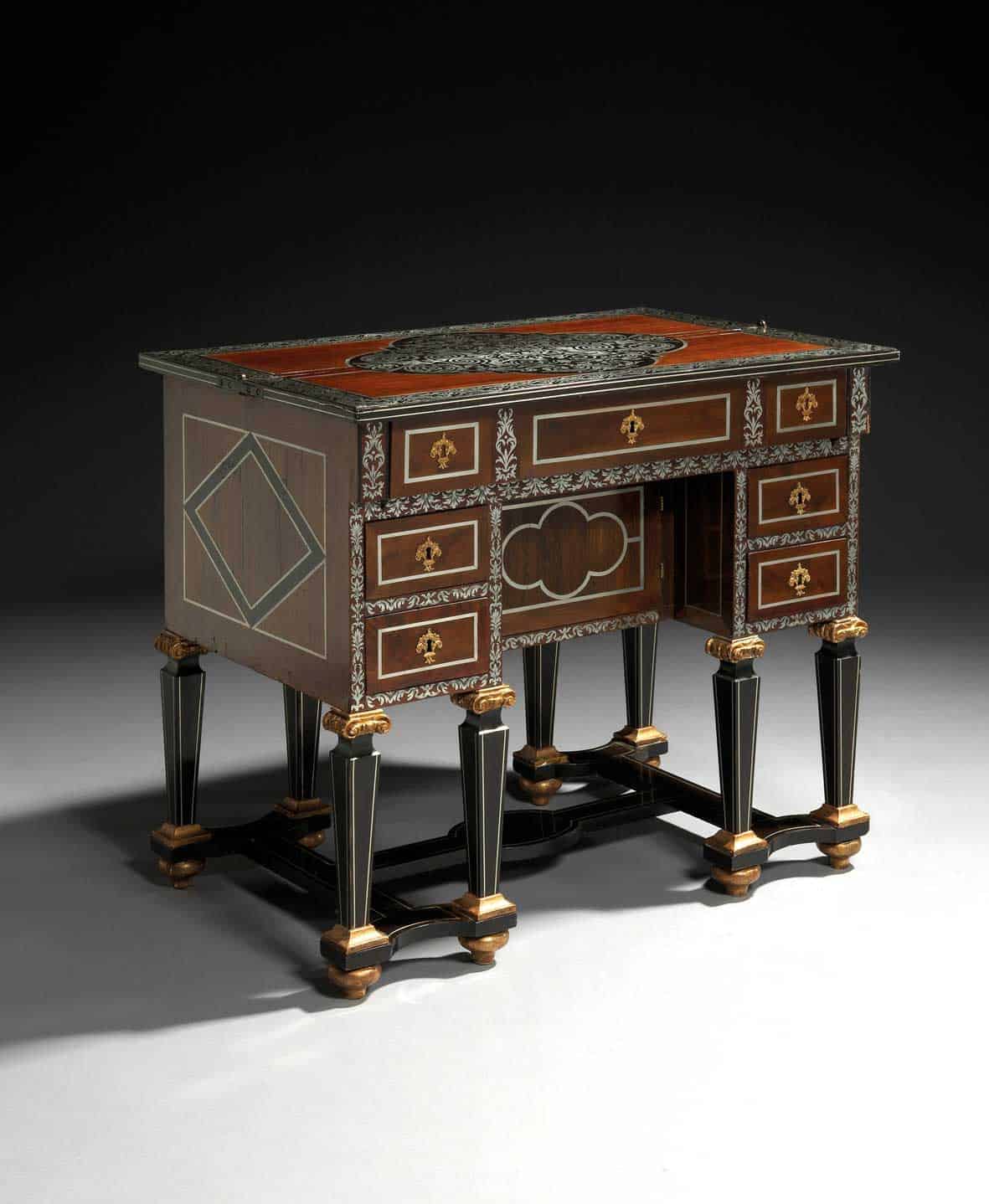
The Bureau Mazarin is a larger antique desk that was also popular in France during the 1600s and 1700s, named for the chief minister of France, Cardinal Mazarin.
As an early version of the pedestal desk, it has a large writing surface, multiple drawers for storage, and eight legs–four grouped on either end, supported by cross braces. Essentially, it has two pedestals on either side of the desk.
This type of antique desk is perfect for those who need a large surface area for writing or working on projects.
Davenport Desk
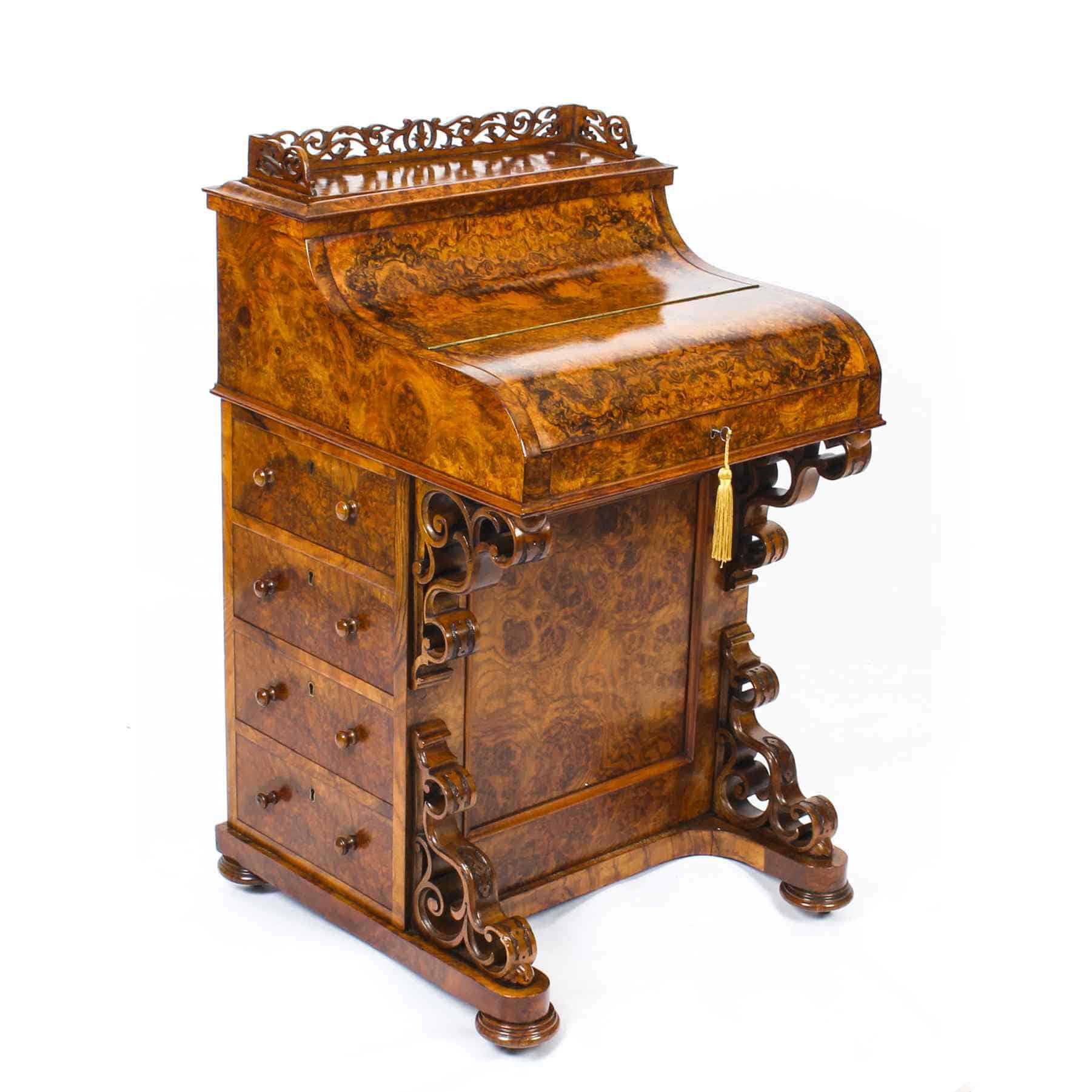
The Davenport Desk is a cute, narrow-yet-chunky antique desk that was popular in England and America during the 1700s and 1800s.
It has a hinged surface for writing similar to modern school desks, except that it’s on an incline. Lifting the hinged surface will give you access to a wide-open space to store paper and other things you might need. Along the side, you’ll see multiple drawers and compartments for storage.
This type of antique desk is perfect for those who want to have plenty of storage space, yet need a piece of furniture that is small enough to accommodate just about anywhere.
Wooten Desk
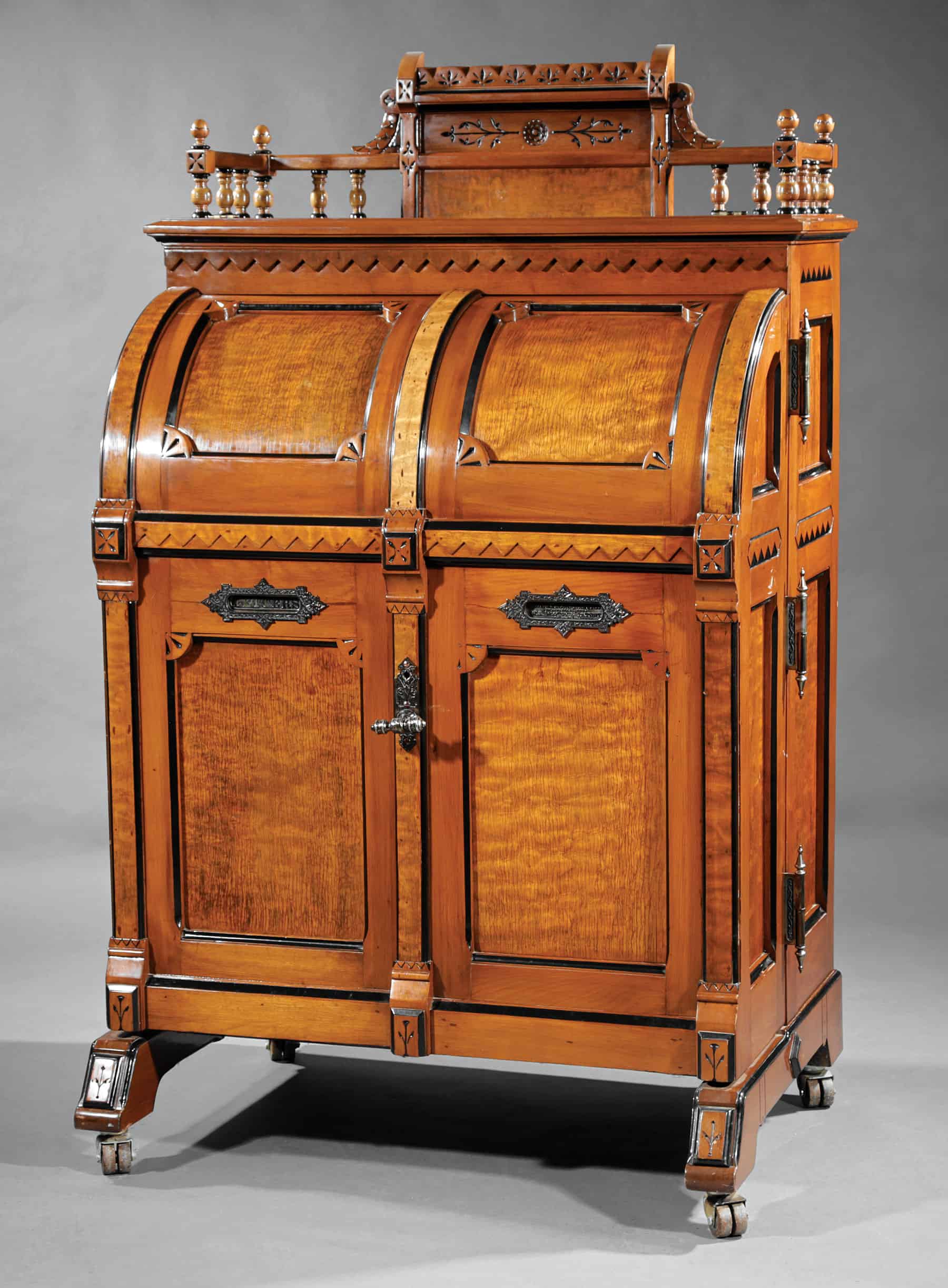
The Wooten Desk is an expandable antique desk that was popular in America during the 1800s.
Upon first glance, it may not necessarily resemble a desk, with its tall, rectangular shape and rounded front. It may appear to be a bureau or another similar structure, especially with it’s ornately designed shelf on the very top.
However, the front is split down the middle, and when these central doors are opened, they reveal a rather large hidden writing center!
This writing center contains a drop-front surface for writing, as well as multiple drawers, letter slots, and compartments for storage. The wings also contain several slots for more storage.
This type of antique desk is perfect for those who need a large surface area for writing or working on projects. It is also great for those who want to have plenty of storage space and love the idea of closing it up when it’s not in use.
Partner’s Desk
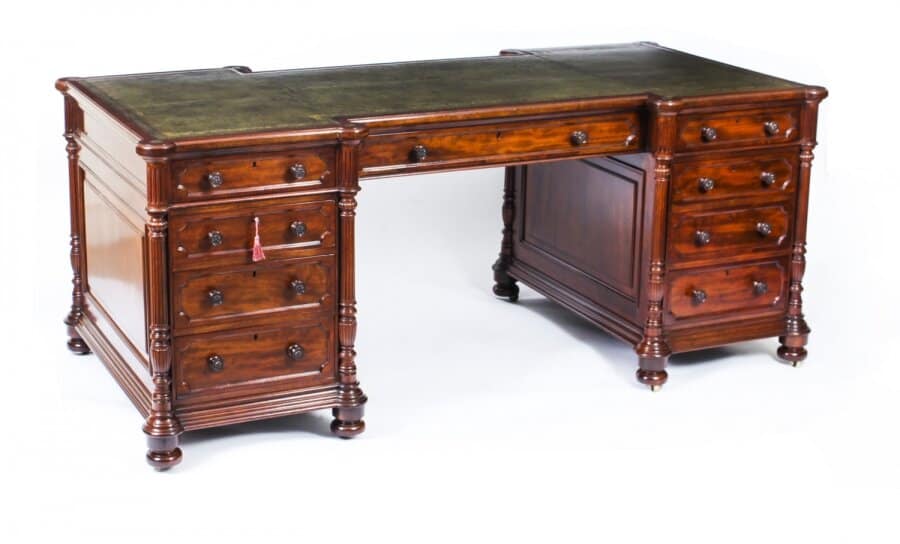
Also called a Double Desk, the Partner’s Desk is a very large desk that was popular in England and America during the 1700s and 1800s. One such famous desk is the one in the Oval Office of the White House, although it has been modified from its original design.
This sturdy structure gets its name from the two pedestals on either side of the desk, which set it up for two partners to use the desk at the same time. They would sit facing each other while working.
These pedestals typically have multiple drawers for storage, and the middle is generally open, unless someone added a modesty panel or compartment later.
Grand and stately, these desks were often made from high-quality woods such as walnut, mahogany, or oak, and they could display rich leather inserts on the writing surface.
The Partner’s Desk is perfect for those who want a large surface area for writing or working on projects, as well as plenty of storage space. It is also great for those who want to have two people sharing the same workspace.
How Do I Know if My Desk is an Antique?
Now that you know a few of the different antique desk styles, you may be wondering how to tell if the desk you own is an antique.
Here are a few things you can look for:
Dovetailing
Dovetailing is a method of joining two pieces of wood together by interlocking them like a puzzle. This was a common method used during the early 1900s, so if you see this on your desk, check if the cuts in the wood seem uneven. If they are, it’s a good indicator that it’s handmade. If they’re too straight, it’s possible a modern machine cut them.
Symmetry
Handmade furniture is often not perfectly symmetrical, so if your desk has some irregularities, it may be an antique. On the other hand, if everything lines up perfectly and is too perfect, it’s likely a newer piece.
Materials
If your desk is made of high-quality woods such as walnut, mahogany, or cherry, it’s more likely to be an antique. These days, most furniture is made of cheaper wood or particle board, so if your desk is made of high-quality materials, and a mixture of woods, it’s a good sign that it’s antique.
Where Can I Buy an Antique Desk Safely?
When shopping for an antique desk, you may be wondering how you can ensure that you’re getting a quality piece. There are a few places that are great for buying desks that you can be sure are antiques.
Estate Auctions
The first is at estate auctions. Furniture pieces are often authentic here, and they are even inspected by experts before the sale.
Antique Stores
Another good place is an antique store. These stores typically have a lot of experience in antique furniture, so they can help you to identify a piece and determine its value.
Online Auction Sites and Marketplaces
While these routes can be a gamble, since you can’t inspect the furniture personally, customer reviews should give you a good indicator of the quality of merchandise each seller tends to carry.
In Conclusion
There you have it! Now you know several of the most popular antique desk styles available on the market. If you’re hunting for one to add to your home office, do some research before buying one to ensure that you’re getting a quality piece.
With so many different styles to choose from, there’s sure to be an antique desk that’s perfect for you.
Which antique desk from this list is your favorite? Let us know in the comments!
